Finite elements investigations about the warm hydroforming process of aluminium alloys using Ls-Dyna
V. Piglionico, G. Palumbo, A.Piccininni - Politecnico di Bari
Antonio Taurisano -
EnginSoft
The production of lightweight automotive and aerospace components is a prominent way to improve CO2 emissions. Aluminium alloys offer great potential to replacing other materials in order to reduce weight, but the conventional forming techniques cannot be used simply replacing the material due the poor formability that such alloys show, at least at room temperature. The formability increases according to temperature and advanced sheet metal forming techniques are required to create complex form with extensive thinning without fracture.
In this work the Warm Hydroforming (WHF) process for the production of the Al alloy AA6061-T6 component was modelled. Such a process utilizes a fluid (oil) working at temperature higher than the room one as “tool” for shaping the blank. The FE model of the case study was created in order to reproduce the experimental geometry and the boundary conditions ; simulations were performed using the explicit commercial finite element code LS-DYNA.
Experimental tests were carried out for the Al alloy characterization (ie. tensile and formability tests in warm conditions) in the “laboratory for Physical Simulations of Manufacturing Processes” (DMMM, Politecnico di Bari).: the flow stress curves according to temperature, strain rate and orientations were obtained, together with Forming Limit Curves (FLCs) at different temperatures.
Different yielding criteria were implemented in order to model correctly the plastic behaviour of the Al alloy, also according to temperature. In addition different values of the friction coefficients were assumed in order to fit experimental data. In fact, process responses such as the thickness reduction were monitored and compared to experimental data measured on real WHF specimens acquired using a Digital Image Correlation System; WHF tests were obtained using the hydroforming facilities available in the “Advanced Forming and Manufacturing Laboratory” (TRASFORMA network – https://afmlab.poliba.it/). Through the implementation of the FLCs it was possible to estimate both the sheet rupture and the critical regions.



